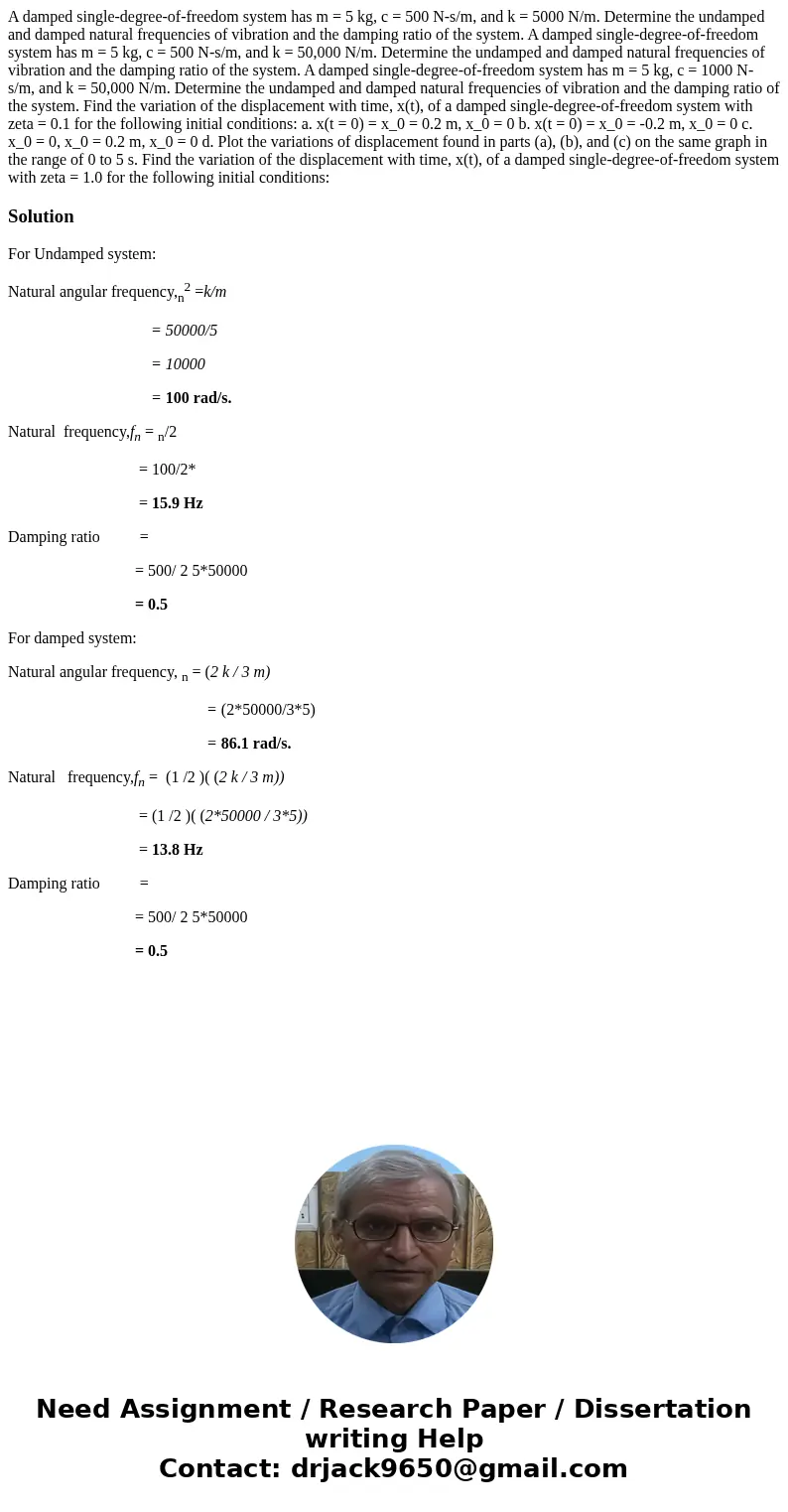A damped single-degree-of-freedom system has m = 5 kg, c = 500 N-s/m, and k = 5000 N/m. Determine the undamped and damped natural frequencies of vibration and the damping ratio of the system. A damped single-degree-of-freedom system has m = 5 kg, c = 500 N-s/m, and k = 50,000 N/m. Determine the undamped and damped natural frequencies of vibration and the damping ratio of the system. A damped single-degree-of-freedom system has m = 5 kg, c = 1000 N-s/m, and k = 50,000 N/m. Determine the undamped and damped natural frequencies of vibration and the damping ratio of the system. Find the variation of the displacement with time, x(t), of a damped single-degree-of-freedom system with zeta = 0.1 for the following initial conditions: a. x(t = 0) = x_0 = 0.2 m, x_0 = 0 b. x(t = 0) = x_0 = -0.2 m, x_0 = 0 c. x_0 = 0, x_0 = 0.2 m, x_0 = 0 d. Plot the variations of displacement found in parts (a), (b), and (c) on the same graph in the range of 0 to 5 s. Find the variation of the displacement with time, x(t), of a damped single-degree-of-freedom system with zeta = 1.0 for the following initial conditions:
For Undamped system:
Natural angular frequency,n2 =k/m
= 50000/5
= 10000
= 100 rad/s.
Natural frequency,fn = n/2
= 100/2*
= 15.9 Hz
Damping ratio =
= 500/ 2 5*50000
= 0.5
For damped system:
Natural angular frequency, n = (2 k / 3 m)
= (2*50000/3*5)
= 86.1 rad/s.
Natural frequency,fn = (1 /2 )( (2 k / 3 m))
= (1 /2 )( (2*50000 / 3*5))
= 13.8 Hz
Damping ratio =
= 500/ 2 5*50000
= 0.5

 Homework Sourse
Homework Sourse